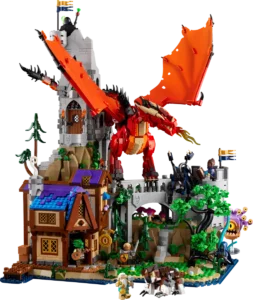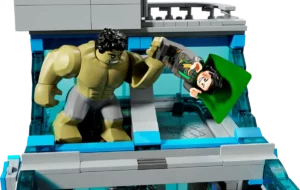Review By Dom Conlon, 2.5 out of 5
Don’t be fooled by its ’12’ rating, Vampire Princess is hardly the type of animated series to keep the kids quiet. It’s subject matter and depiction are all remarkably dark and brooding and even the action has a resigned air of inevitability about it that undermines any sense of victory or conquest. Having said that, it is still a welcome change to the increasing onslaught of extended toy adverts that are cynically being pumped out of many animation houses these days.
Vampire Princess centres around the stuggle of Miyu (the titular ‘heroine’) and her sole companion Larva as they work to eliminate a race of demons known as Shinma from the Earth. Thematically, Vampire Princess explores what it means to be human, the nature of evil (and the consequences of weakness or vulnerability), relationships and of course the staple diet of light versus dark. Like much anime, the series sets out on a deliberate story arc which at times overwhelm the requirement to entertain within a single story but which does promise real development and real rewards for the faithful viewer.
The series begins, naturally enough, with disc one and three half hour stories. It’s a slow start with very little in the way of action but much in the way of character development as we are introduced to Miyu and the schoolgirl world in which she resides. The pacing only becomes an issue at times when you hope for a little less atmopshere and more actual insight into Miyu’s life. For the most part, however, we are content to be lulled along with the stories.
For those more used to Western animation it may come as a surprise to experience a script which whilst at times clumsily translated, refuses to restrict itself to simplistic good/bad terms. Just as in the superb Spirited Away, the notion that anyone is purely good or purely evil is shied away from. Some of what is presented as evil is done so in a way that suggests reason rather than nature. Yet again and again it is more the promise of what Vampire Princess could have been rather than what it is that keeps you watching.
By no means a bubblegum movie, the violence is occasionally more extreme than one would expect though, as with all the action in the series, it is confined to short, sharp bursts in an otherwise sedentary pool of reflection. Demons being cut in two, speared and otherwise mistreated are depicted in true line trembling detail. Such scenes continue only so long as is needed to make the point that a creature is wounded or dead and so the term gratuitous never becomes an issue. On top of the general downbeat hopelessness however it takes on a certain grimness.
In later stories, we learn much more about how Miyu came to be where she is, doing what she does and there are some enjoyable stories (though mostly after the first disc). The development cycle begins eventually to bring out some real supernatural thrillers that work well at unsettling occasionally.
Yet when the titles finally roll and the compulsory theme tune sounds, the feeling of frustrated dissatisfaction hangs in the air. Typical of much of the anime produced around this period it hints at more than it delivers. Art is competant but rarely anything beyond the generic. Storylines are mostly a little half hearted as though the writer wasn’t quite comfortable with the structure. When a story breaks through this then it does so in style and evokes a sense of creepiness and depth that should have been seen as a constant. In the end though, it seems the theme of teenage alienation was taken too seriously.
Vampire Princess Miyu – Vol. 1 – Initiation
Vampire Princess Miyu – Vol. 2
Vampire Princess Miyu – Vol. 3 – Illusion
Vampire Princess Miyu – Vol. 4
Vampire Princess Miyu – Vol. 5



